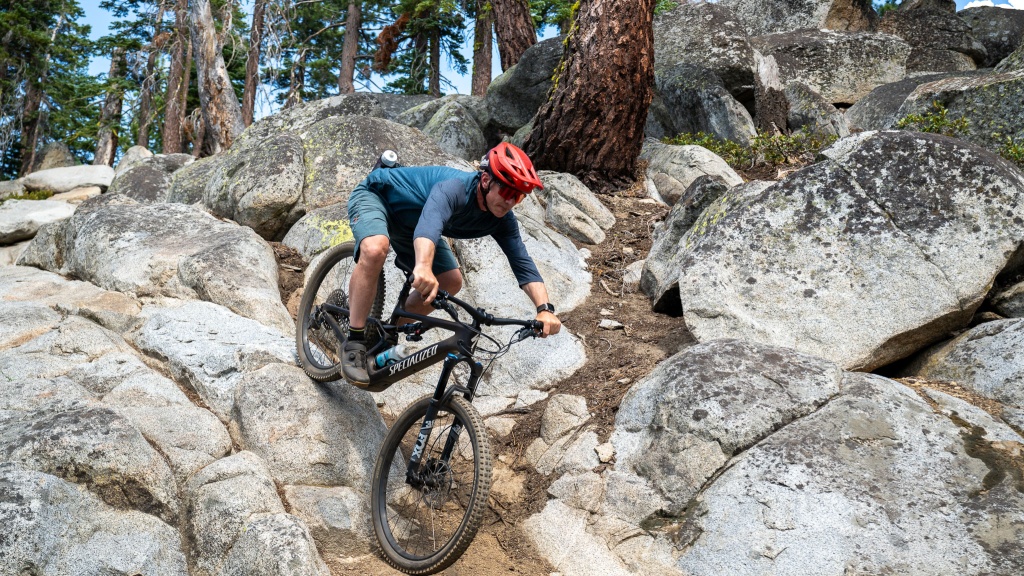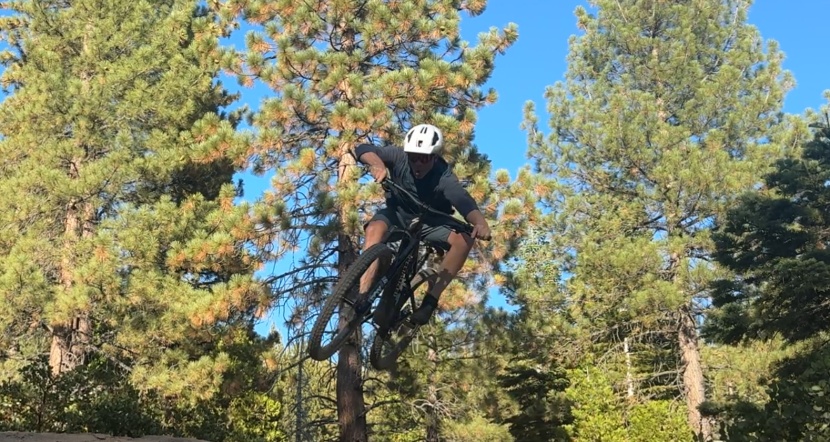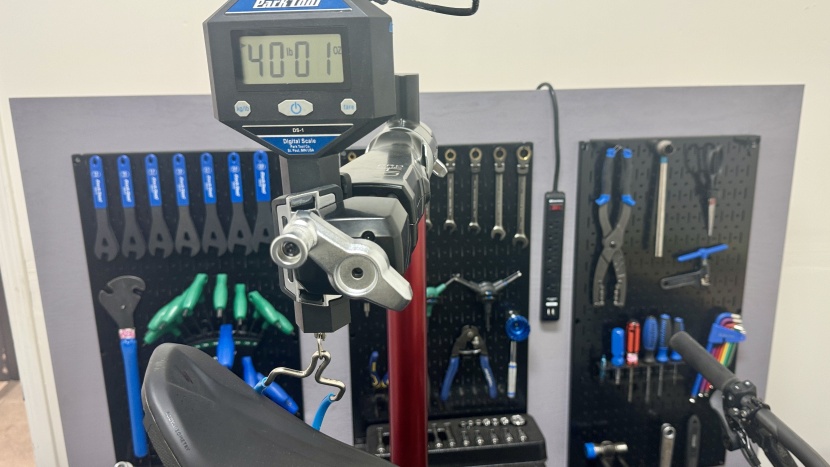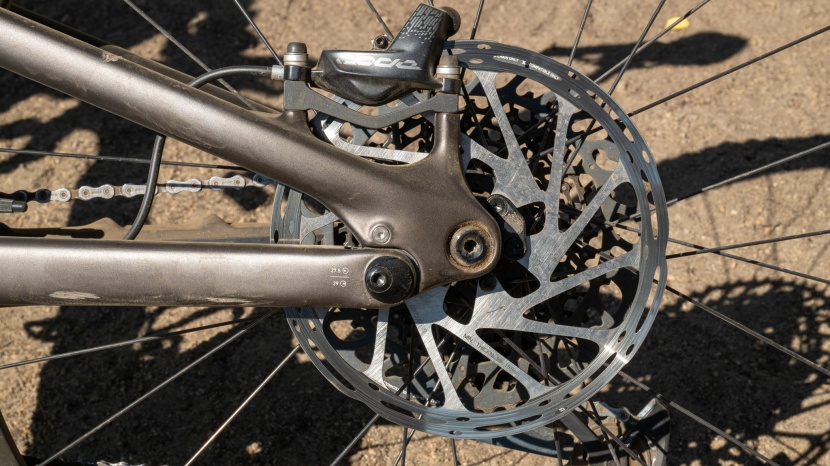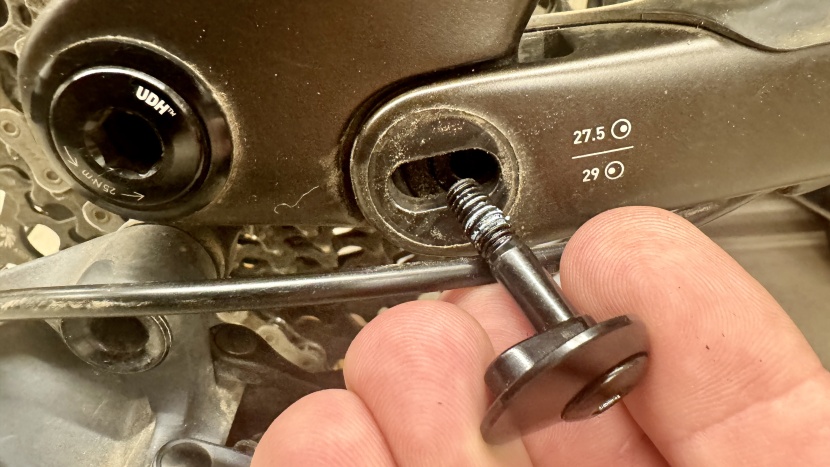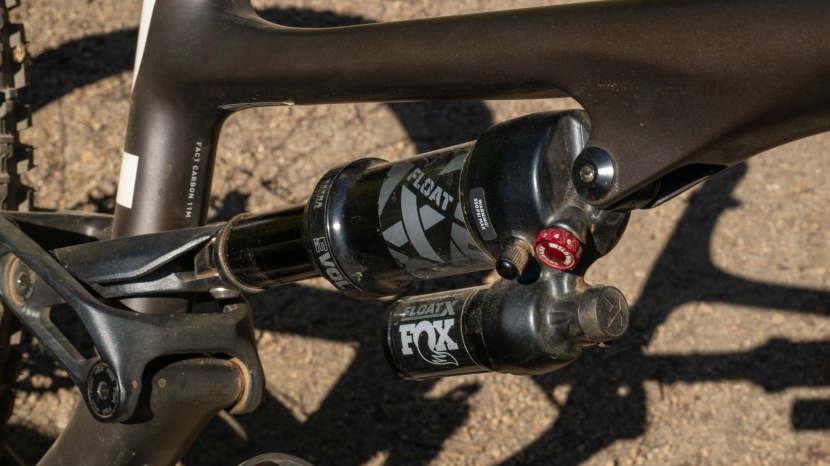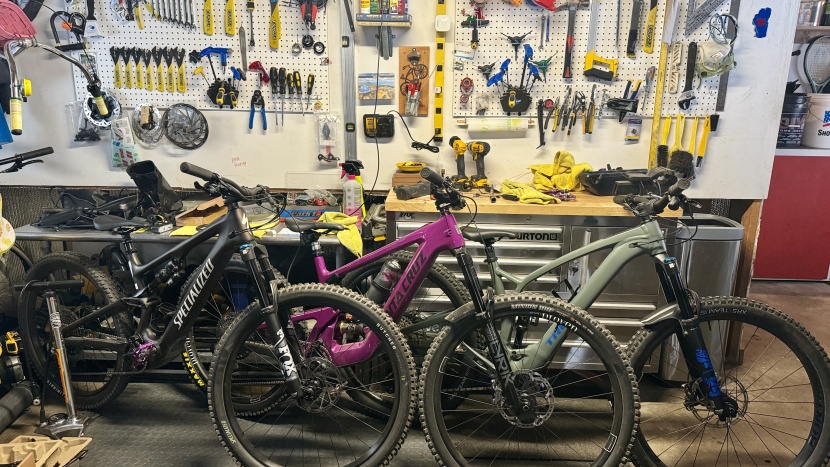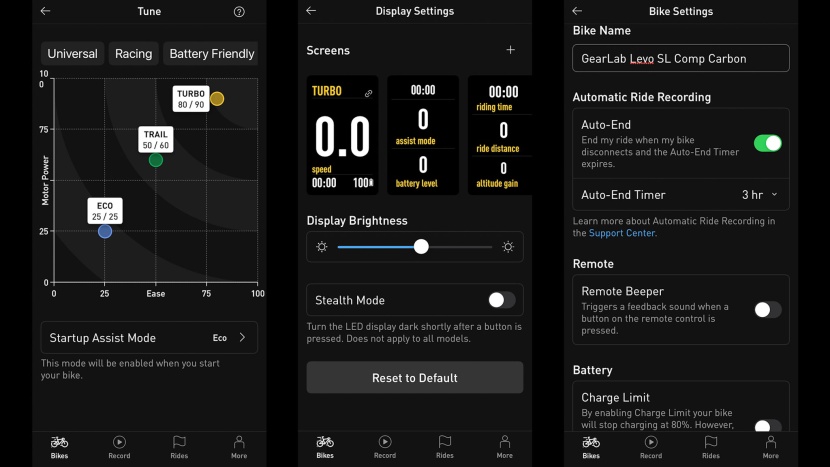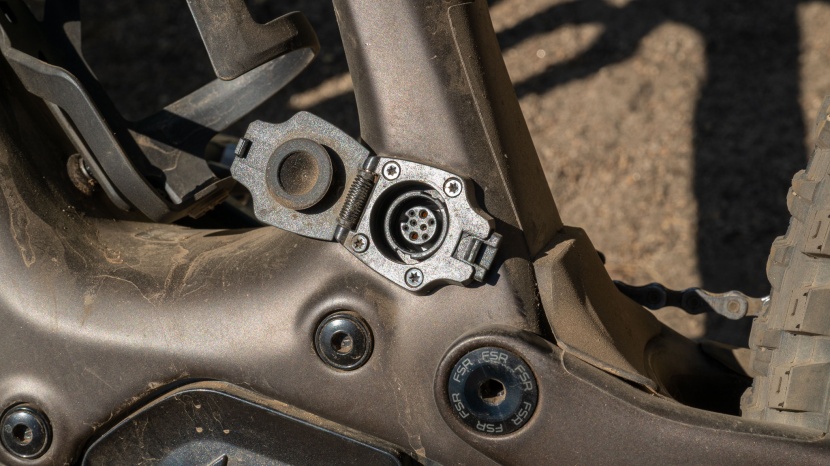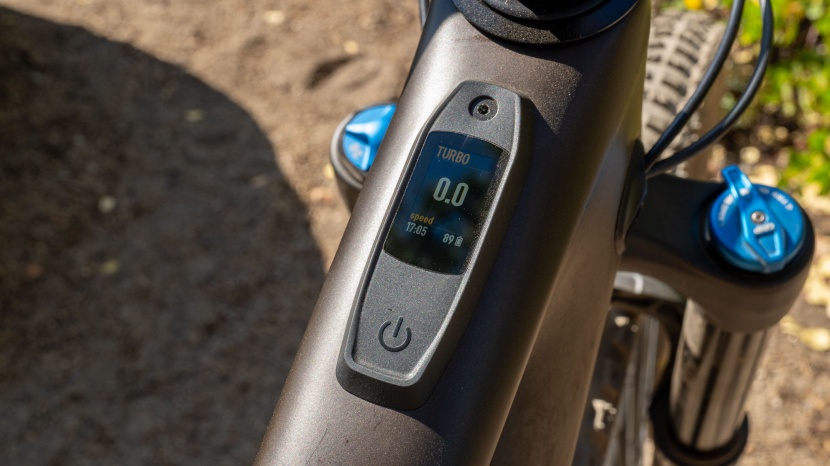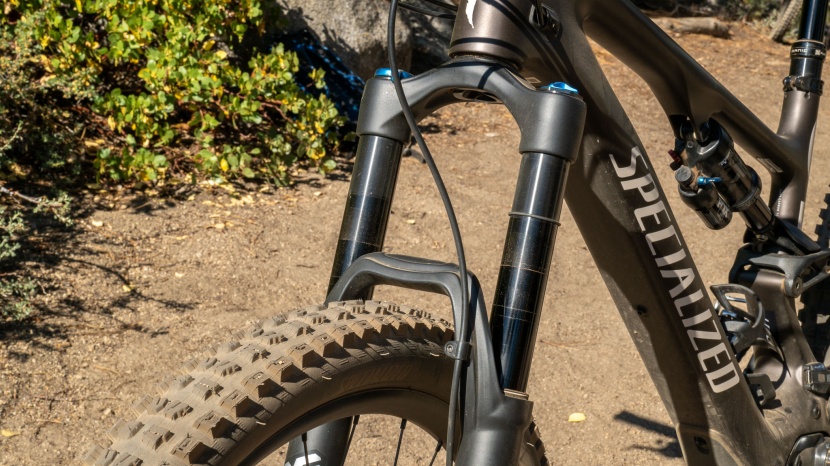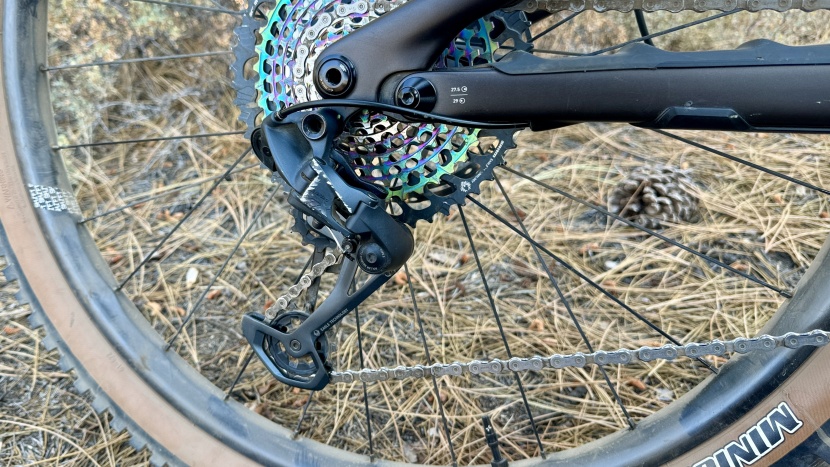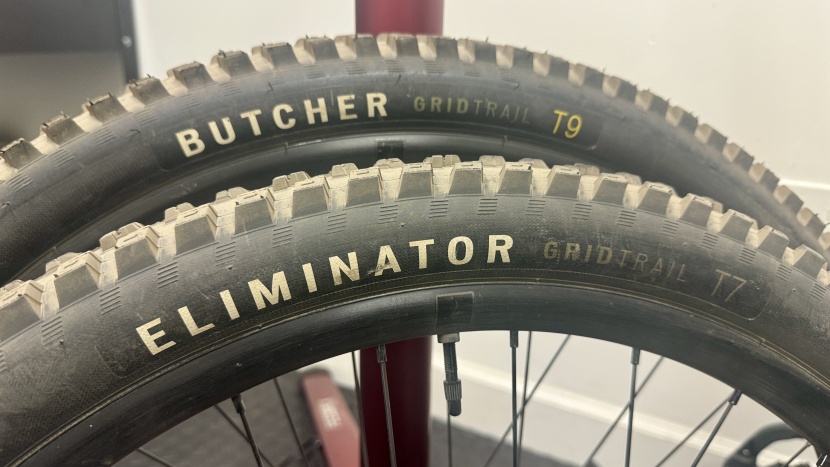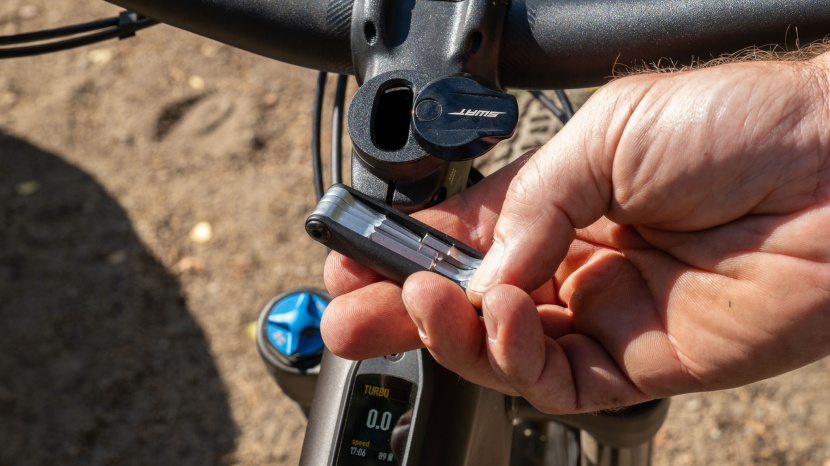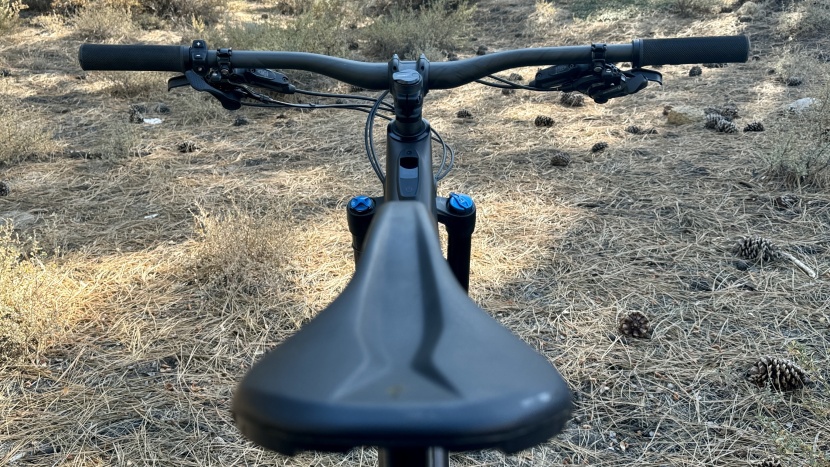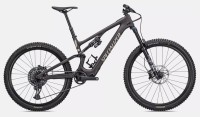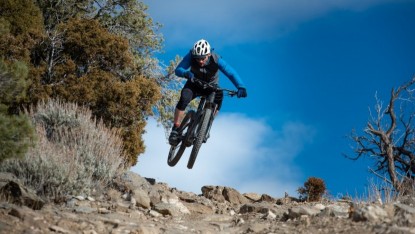
Our Verdict
Our Analysis and Test Results
Specialized has long been renowned for its innovation, and the Levo SL shows just how much innovating they've done. The new Turbo 1.2 motor dishes out 50 Nm of torque and up to 320 watts of power while keeping its weight under 2kg. That's the same weight as the outgoing model that generated 35Nm of torque and a maximum of 240 watts. Our testers loved the current generation of full-powered Levos, but these lightweight e-mountain bikes are so much more fun to ride as they strike a better balance of power and weight. The Fact 11m carbon frame is now symmetrical and houses a shock with just a bit more stroke below the top tube. 150mm of FSR travel in the rear can be run with a 27.5" or 29" wheel with a simple adjustment on the chainstays. Up front, the fork grows to 160mm of travel and utilizes the same adjustable headset we find on the Levo and Stumpjumper to give the rider three different headtube angles to choose from. The SL now uses Specialized S sizing and is available in 6 different sizes from S1 to S6. Our S4 Comp model arrived with Mx wheels and tipped the scales at just over 40 pounds.
Downhill Performance
Looking at the bike's initial measurements, you can tell the Levo SL is going to be well suited for trails that point downhill. With available headtube angles between 63 and 65.5 degrees and a 470mm reach, the bike is wildly versatile. 432mm chainstays keep the small rear wheel tucked in tight and the handling poppy and quick. A 1238mm wheelbase gives the bike some stability but not so much length that it feels cumbersome.
Of course, the bike's ride quality can't all be defined by the measurements that we take, but they give us clues about its disposition. On our first several rides, we had the headtube angle set to 64.6 degrees, and the end of the trail seemed to arrive faster than we expected. In this setting, the bike is positively playful and eager to hit all of those side quests. The bike's weight disappears on the descents, drops, and airs; you only really notice that it's heavier than a regular trail bike when you lean into a full sprint. Above 20mph, the motor offers no assistance, and there are plenty of times that we'd mash the pedals, pushing toward 30, where the bike would feel heavy in the arms and slower to accelerate. The FSR suspension uses some updated kinematics to make the leverage curve a bit less progressive. On paper, this gives the bike a bit more small bump sensitivity and more mid-stroke compliance. On the trail, the rear end doesn't feel markedly different than its predecessor. In mellow terrain, the rear end feels glued to the ground, and the small to medium bumps are straight-up handled. In gnarlier terrain, the bike gives the rider a bit more feedback. It doesn't swallow big hits like the Santa Cruz Heckler SL, but it doesn't lose its composure, either. The added weight seems to increase traction and give the bike a gravitational advantage; it doesn't get pushed around or pinball in your line choice.
The bike is quick, it feels lively, and not at all reluctant to get airborne. Even in the air, the bike feels stable and not much like an electric bike; it rides like a trail bike with extra grip. Whipping or pulling the bike into a tabletop, the bike's mass isn't dominated by its downtube battery. The Fox 36 Rhythm Fork and Float X Performance Shock aren't fancy, but we have zero complaints about their performance. The 36 can sometimes feel inadequate on an e-bike, especially one without a dedicated e-bike crown like this fork, but it felt stiff enough, even in our fastest runs. We were surprised when we scanned the fork's QR code to find that our 2024 bike came with a 2021 fork from Specialized, but aside from updated bushings and fender mounts, there aren't many differences.
The Levo SL geometry is quite similar to the standard Levo; the two bikes only differ by a few millimeters in reach, wheelbase, and rear center. You'd be tempted to think the bikes would ride similarly, but that's not the case. While we're big fans of the full-powered Levo, this isn't a point against the SL. Our Levo SL Comp is a full 10 pounds lighter than our S-Works Levo, and that weight makes a huge impact on the way these bikes perform. The Levo holds its own when pointed downhill, but it lacks the spry playfulness of this Levo SL. The Levo SL is 17mm shorter in the wheelbase, but 10mm of that is in the rear center; this keeps the bike's rear end tight and sporty feeling, giving it less reluctance to change directions. This FACT 11M carbon frame provides snappy maneuverability and less weight; it's a total win for its descending prowess. Full-power e-bikes sometimes feel like they rely on their mass to monster truck through the rough, but the Levo SL reminds you that the smoothest line is always in the air, and it's happy to go there.
The Levo SL's FSR rear end and 160mm fork feel well-balanced and give the bike trail-hugging grip. Many modern e-bikes have taken to using short crank arms, but the SL uses 170mm cranks with a 180mm q-factor, which further distinguishes it from current e-bikes. The balanced suspension and Specialized Butcher / Eliminator tires come together to give this bike heroic cornering performance. The 2.3" tires were excellent in most conditions, but blown-out late summer trails necessitated the move to a 2.5" front tire.
When we test bikes, we take all of our own measurements, and most of those numbers coincide with the numbers that Specialized published. A notable exception is the weight of this bike; we've become accustomed to manufacturers stated weight being a lofty ideal in some kind of anti-gravity chamber. Specialized has a published weight for the S4 size of 40 lbs. 14.3 oz. According to our scales, this S4-sized test bike weighs 40 lbs. 1oz set up tubeless without pedals, which is almost 13 ounces less than the stated weight from Specialized. We can only hope the trend of under-promising will catch on.
The Comp model is Specialized's least expensive version of the carbon Levo SL models, but it's fairly well equipped. The cockpit is all alloy with a 40mm stem connected to 780mm handlebars. The bars feature 30mm of rise and an 8-degree back sweep with 6 degrees of upsweep; they're capped with Specialized Lock-on Trail grips. Each frame size has its own seatpost length, and our S4 came with a 170mm X-Fusion Manic dropper topped with a Bridge Comp saddle using hollow cr-mo rails. We have no complaints about the cockpit's quality or comfort but will likely upgrade to a carbon bar for a bit more vibration dampening. SRAM Code RS brakes squeeze 200mm rotors and remained fade-free even on our longest descents.
Climbing Performance
To assess the bike's climbing performance, we look at its power, geometry, and kinematics. The Levo SL doesn't struggle on the climbs, but even with its additional power, it doesn't take the work out of heading uphill. The climbing experience isn't dominated by the motor or the extra weight in the downtube. Most of the time, we felt like we were just climbing on a particularly good day with fresh legs. The motors integration is amongst the best we've experienced, giving the bike a peppiness that is easy to mistake for your own. There isn't that silly power you feel on a full-powered Levo, but you're never wrestling with the bike's torque.
The geometry works quite well for climbing with a 75.8-degree seat tube angle and 470mm reach. 75.8 isn't exactly steep in the days of modern trail geometry; if this bike lacked assistance, we'd likely prefer a slightly steeper seat tube. As it is, your positioning provides an excellent mix of power transfer and traction. We rode this bike in all of the different geometry combinations and with both 27.5 and 29" rear wheels. Our observations from this testing were that climbing with the larger rear wheels gave the bike some additional traction and enhanced the ability to get up and over obstacles. The large rear wheel also felt faster and more efficient, but it made the bike feel less rowdy. Climbing with the head tube in its slackest setting of 63.6 degrees felt predictably sloppy, but the faster you rode, the more stable it became.
The bike's compact 432mm chainstays (with 27.5" rear wheel) and wheelbase 1238mm wheelbase give it an agile and responsive nature. The front end comes up easily, and picking your way through technical sections never felt cumbersome. There were very few circumstances where we felt a downside to the bike's extra mass; we pedaled several challenging sections with the bike completely turned off and found it surprisingly adept.
The FSR rear end is predictably supportive, but we still found ourselves using the Fox Float X's dampening adjustment for longer climbs. The bike uses an updated lower leverage curve that enhances small bump sensitivity but creates a bit more unwanted movement on the ascent. The upside of that sensitivity is the fantastic traction, but when the ride didn't call for extra grip, it was nice to have the switch that firmed up the feel.
Power Output
The Levo SL is now amongst a crowded field of mid-power e-bikes vying for your dollars. Most of the bikes in this category provide 35-60Nm of torque, and the Levo SL sits near the middle at 50Nm, but that number doesn't really define the bike's performance. We tested this bike side by side with the Trek Fuel EXe (50Nm) and Santa Cruz Heckler SL (60Nm) and found the Levo SL to provide the most powerful feeling. The 320 watts of power from the SL 1.2 motor feels consistent, and while slightly underwhelming on paper, it feels most similar to the Trek EXe and, oddly, more powerful than the Santa Cruz Heckler SL. The Levo SL's power allowed us to climb some sections that we probably wouldn't have cleaned on our analog bike, with just enough extra wattage but not enough weight to cancel out the benefits. The bike won't climb for you, but it certainly makes you feel like a hero when you forget that you're riding an e-bike.
Specialized calls the Levo SL the Ultimate Trail Bike, and at this point in time, I don't feel comfortable giving that title to an e-bike. That said, this bike provides a fantastic way to experience more trail than your legs might have an appetite for. The Specialized tag line of “2 X You” amplification feels fairly accurate. While some of us may be able to sustain more than 320 watts on a ride, it likely doubles the pedaling effort of most riders. This isn't the “4 X You” Levo that blasts up the climbs, but it's also not 50 pounds. Some of our testers who have become accustomed to full-powered e-bikes found this bike underwhelming; you get used to the 20 mph climbs and abundant power after a while. This bike is ideal for the athlete who doesn't want to give up cardio for adrenaline and values a nimble, lightweight trail feel. The ECO, TRAIL, and TURBO ride modes give you a wide variety of assistance and allow you to tune your heart rate accordingly.
The Specialized App, formerly known as the Mission Control App, allows you to adjust a wide array of variables. Motor tuning involves setting parameters for each of the three ride modes. You can optimize for battery preservation, proportional support, or constant motor power. You can adjust not only the motor's output power but also the amount of your power required to activate each level of support. If that seems daunting, you can choose from several presets that are tuned to different ride characteristics. You can customize the bike's mode each time it powers on, and you can change the MasterMind TCU screen settings to convey just the information you want to see. There is a stealth mode that darkens the display and minimizes its information after a button is pushed. We found this valuable when night riding as the bright light on the top tube can feel distracting.
Range
The 320Wh battery in the Levo SL lasted for 21.1 miles and over 4120 feet of climbing. This was with a 170lb test rider in 55-degree temperatures on mixed surfaces. While it has a smaller battery, we could ride the Levo SL further than the 360Wh Trek EXe and almost as far as the Heckler SL with its 430Wh battery. The bike maintained full TURBO power until its final 10% charge, when its power dropped to the TRAIL level of assistance. Most riders would pedal at more than 100 watts and could expect more range than we got during our testing. Riders wanting to explore deeper into the woods can opt for the Range Extender battery, which provides an additional 160Wh of power, which should give the bike roughly 50% more range. The additional battery fits into a bottle cage and plugs directly into the charge port. The range extender battery weighs 1067 grams and is a great option for those who feel they want to ride further and those with range anxiety.
E-bike Controls
This metric is assessed throughout testing and uses feedback from all of our testers. There are currently a wide range of controls and interfaces on e-bikes and not all of them are created equal. We value ease of use, how quickly you can glean data, and how intuitive the controls are. The Levo SL features Specialized's newest TCU or Turbo Connect Unit. There are multiple ways the display units convey information to the user, and the TCU allows the user to customize their view with 120 possible combinations of data on the display.
The bike's physical controls sit in a 4-button remote on the inside of the left handlebar grip. A simple plus and minus on the front of the control changes your ride modes, while a button on top changes your view in the TCU. On the bottom of the controller is a button that enables walk mode, which will make the bike propel its own weight while you walk next to it. This can be a handy feature if you find yourself in a situation that feels beyond your abilities or is too steep to ride and prevents you from having to push the heavier-than-normal bike.
To power up the Levo SL, you push the single button on the TCU; everything else can be done with the controller on the handlebar. The charging port uses the same clever spring-loaded door that the previous Levo SL used and sits just above the bottom bracket. Charging the bike from a completely drained battery with the 48V 3 amp charger took 2 hours and 39 minutes.
Build
While the Turbo Levo SL Comp is the least expensive of the Fact 11M carbon framed models, it's built fairly well. The drivetrain is SRAM's GX Eagle drivetrain and uses the XG-1275 10-52 cassette. We appreciate the wide gearing paired with a 32T chainring, and notably, this cassette uses an Xd-free hub body, which means you can upgrade the cassette on this wheel. For those looking for a meaningful upgrade, the XG-1295 cassette weighs about 100 grams less and improves shifting performance. SRAM Code RS brakes connect with 200mm rotors on native 180mm post mounts, which means you can run smaller rotors without adapters should you not need the full force of these 4-piston stoppers.
We found it curious and maybe a tad disappointing that our bike came with a 2021 model year Fox Rhythm 36 fork, but as stated above, we don't really have any qualms with its performance. The Float X Performance series shock features a piggyback reservoir that helps give it consistent performance in high-heat situations; it features a 2-position compression damping lever. The alloy cockpit feels well-appointed with Specialized house-brand goods. A 780mm wide alloy handlebar connects with a 40mm stem using a modern 35mm clamp. The Specialized SWAT multi-tool hides inside the steerer. A 34.9mm X-Fusion Manic seat post handles dropper duties; our S4 gave us 170mm of drop. The S1 size gets a 100mm dropper; the S2 gets 125mm; the S3 gets 150mm; the S4 and S5 both use the 170mm post, while the S6 gets the deep 190mm post. A Bridge Comp saddle looks fairly basic, but like other well-designed saddles, it becomes unremarkable.
The Levo SL Comp rides on Specialized Roval Traverse alloy rims with an internal width of 30mm. Sealed cartridge bearing hubs and 28 DT spokes per wheel round out the wheel package. The stock Specialized tires are better than most house brand tires, using their GRID TRAIL casing and a GRIPTON T7, (harder compound) in the rear and GRIPTON T9 (softer compound) up front. The GRID TRAIL casing features a more robust sidewall and puncture-resistant casing, making them a great choice for aggressive trail riding.
Should You Buy the Turbo Levo SL?
If you're in the market for a mid-power electric trail bike, we think the Turbo Levo SL is the best in this category. The bike ranks so incredibly close in all of our metrics to the Trek Fuel EXe, but we prefer the Specialized due to its lighter weight, hi-resolution customizable Mastermind TCU, and geometry that features even more adjustability. While not packing the full-power punch of the heavier bikes, it more than compensates with its agility and versatility. If you've decided that a mid-power bike is right for you, the Levo SL should be at the top of your list. If you're on the fence, grab one for a test ride, and remember that you can always add a range extender to this bike to enhance its range.
What Other Electric Mountain Bike Should You Consider?
The Trek Fuel EXe 8 GX AXS Transmission is another excellent bike to consider, as it has very similar specs and performance. We really liked how quiet the TQ motor on the Trek was and felt it rivaled the Specialized in just about every way. The Santa Cruz Heckler SL R is another solid contender in this category. Although its Fazua motor generates more power and torque than either of these bikes, it wasn't apparent in our extensive side-by-side comparison and ride testing. We liked how rowdy and fearless the Santa Cruz felt, but it didn't have the level of integration that we found so impressive with the Specialized or Trek.
| Awards | Best Lightweight e-mountain bike |
|---|---|
| Price | $8,000 List |
Overall Score  |
|
| Star Rating | |
| Bottom Line | For the rider not looking to give up on fitness and let the bike do the work, excellent electronic integration gives a seamless trail ride experience |
| Pros | Lightweight, trail bike feel, optional range extender, excellent motor integration |
| Cons | Pricey, limited range |
| Rating Categories | Specialized Turbo Le... |
| Downhill Performance (30%) | |
| Climbing Performance (25%) | |
| Measured Effective Range (25%) | |
| Power Output (15%) | |
| E-Bike Controls (5%) | |
| Specifications | Specialized Turbo Le... |
| Battery Size (Wh) | 320Wh (+160Wh Range Extender) |
| Wheel size (inches) | MX (29" front, 27.5" rear) |
| Motor System | Specialized SL 1.2 (320W) |
| Motor Power (torque) | 50Nm |
| Measured Weight (w/o pedals) | 40 lbs 1 oz (S4)(2lbs 6 oz - range extender battery) |
| Measured Effective Range | 21.1 miles |
| Fork | Fox 36 Rhythm 160mm |
| Suspension & Travel | Future Shock Rear (FSR) - 150mm |
| Shock | Fox Float X Performance (FSR) 150mm |
| Frame Material | FACT 11M Carbon Fiber |
| Frame Size Tested | S4 |
| Available Sizes | S1-S6 |
| Wheelset | Roval Traverse 29, 30mm internal |
| Front Tire | Specialized Butcher GRID TRAIL GRIPTON 2.3" |
| Rear Tire | Specialized Eliminator GRID TRAIL 2.3" |
| Shifters | SRAM GX Eagle |
| Rear Derailleur | SRAM GX Eagle |
| Crankset | SRAM Alloy |
| Crankarm length | 170mm |
| Cassette | SRAM XG1275 10-52T |
| Chain | SRAM NX Eagle |
| Saddle | Specialized Bridge Comp |
| Seatpost | X-Fusion Manic 175mm (large) |
| Handlebar | Specialized Trail 780mm |
| Stem | Specialized Trail 50mm |
| Brakes | SRAM Code RS 4-piston |
| Grips | Specialized Trail |
| Measured Effective Top Tube (mm) | 631 |
| Measured Reach (mm) | 470 |
| Measured Head Tube Angle | 64.6 |
| Measured Seat Tube Angle (effective) | 75.8 |
| Measured Bottom Bracket Height (mm) | 348mm |
| Measured Wheelbase (mm) | 1238 |
| Measured Chain Stay Length (mm) | 432 |



